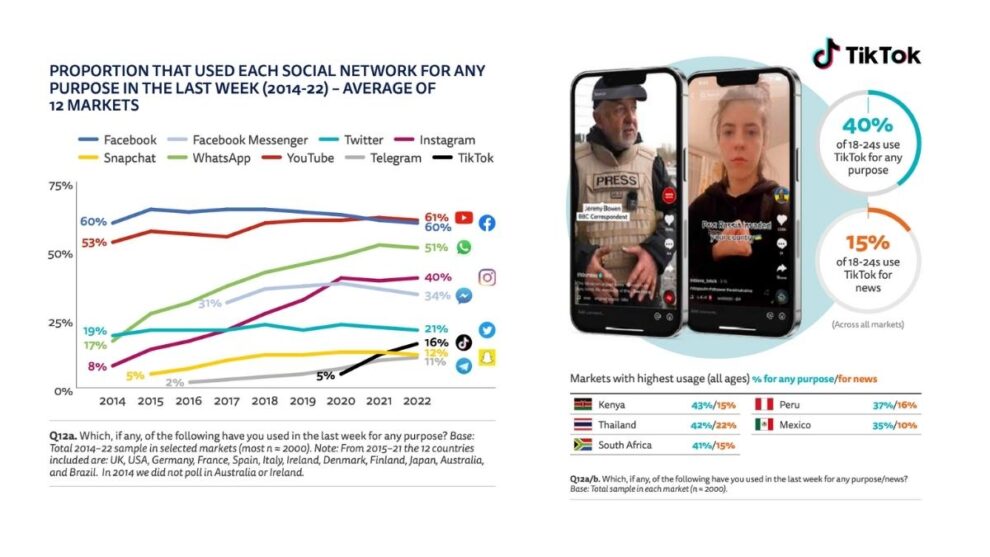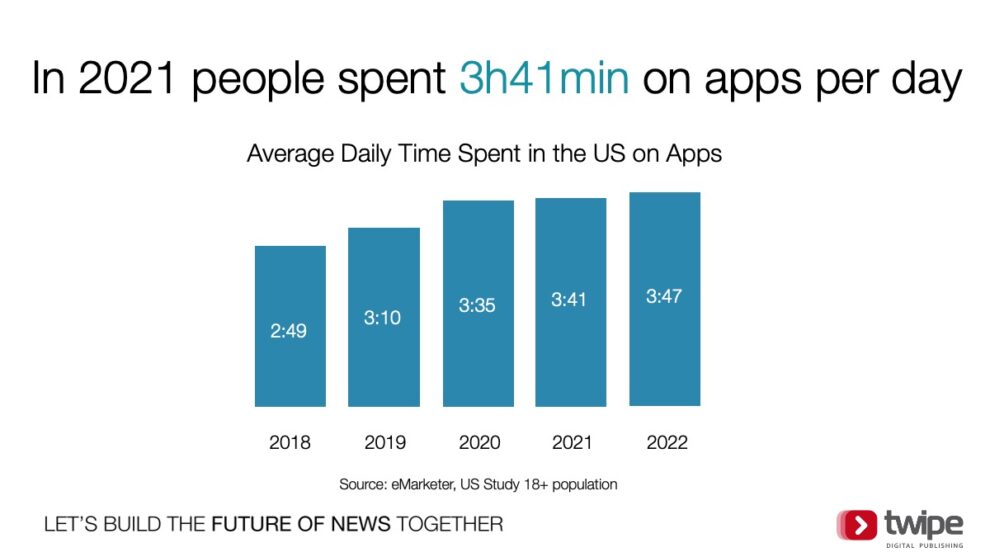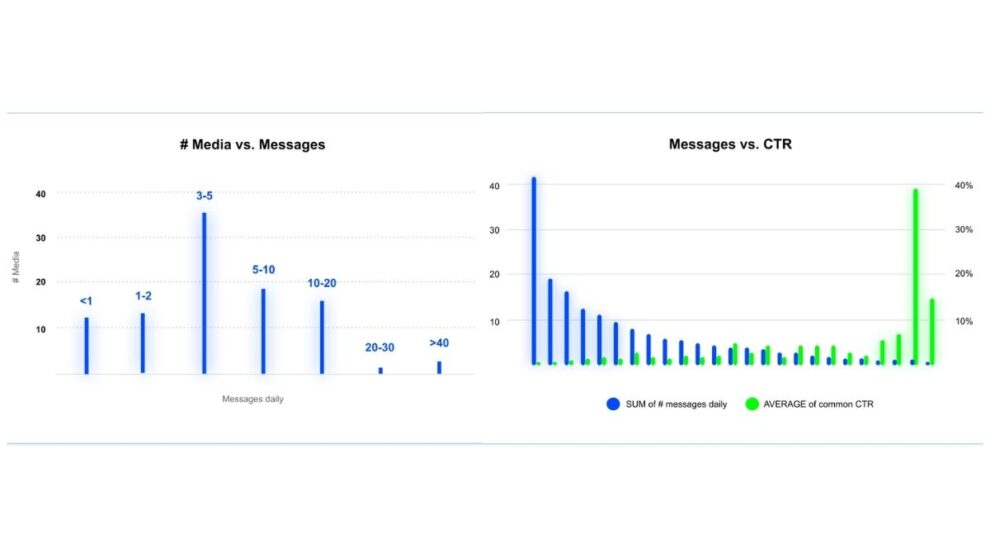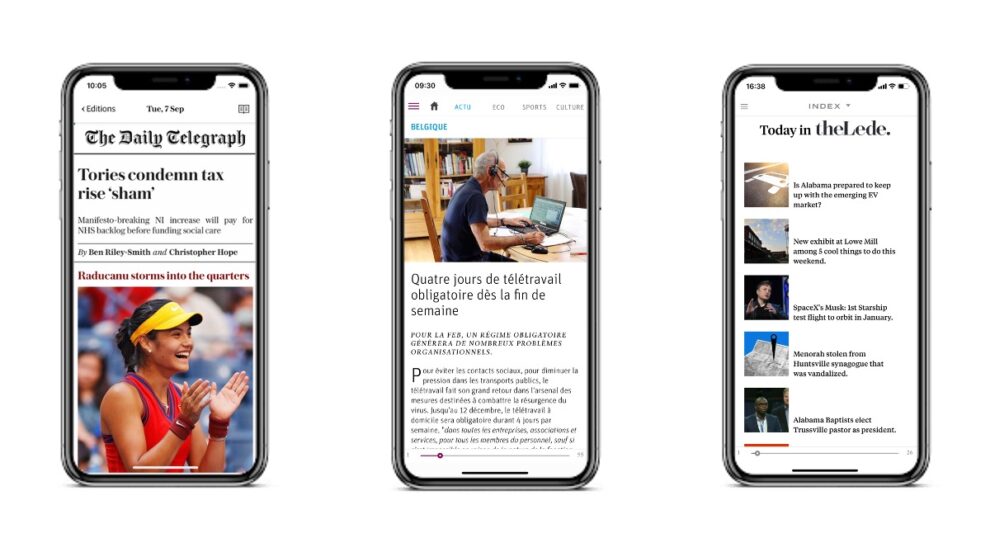Industry news
The importance of mobile and how it is shaping the news publishing industry
Despite a small decline in usage, mobile is the dominant device for news access consumption. Since the launch of the first smartphones in the late 90s and the first iPhone in 2007, publishers have been making moves to present their news on the devices. In fact, this week the iPhone celebrated its 15th birthday. So, we’ve taken a look at the importance of mobile and how it is shaping the news publishing industry.
Younger generations are mobile natives and social media lovers
Mobile has become a critical tool for publishers to attract younger readers. Reuters found that 47% of under 35s use mobile as their first device to access news, compared to 28% of aged 35-64. In our own research when speaking to a group of Gen Z news lovers, we also found that mobile was their key consumption device, particularly as they are mobile natives.
This widespread use of mobile comes with its own predicament. Do publishers focus on meeting younger readers where they access the news? Do they build great app experiences for their stronghold generations? Can they try to do both?
Social media is currently the number one place where people start their news journeys on mobile. 39% use it as their gateway to news at the start of each day. Facebook still dominates the social media model for news, but for Gen Z, TikTok is the main hub. 40% of Gen Z use TikTok for any purpose, and 14% use it for news. Despite a slow start, publishers are picking up their presence on the platform. Press Gazette found that this has predominantly been the case since the war in Ukraine began.

A significant change in the platform itself helped news publishers to flourish: videos no longer have to be 10 seconds. Videos can now be up to 10 minutes, but most still try to stick to 60 seconds. Publishers can provide more detail and make content more accessible by offering deeper explanations and background information. Utilisation of TikTok also provides publishers with the challenge to push readers from their accounts to their mobile apps. After all, this is what will drive readers to pay for news. Younger readers are the future of news, but this focus on social media can build brand familiarity with them and encourage paying relationships in the future.
Investment in mobile apps crucial to solidifying audiences
Interestingly, our Gen Z News Lovers suggested that news publishers should focus their investment on their own mobile tech rather than elsewhere so that people go directly to news apps, not to others. Social media for them was a platform dominated by others like influencers.
Investment in top quality apps is key to the news experience on mobile and central to the challenge of getting subscribers to pay for news. It is also central to the news consumption of older generations, the heartbeat of subscriber revenue. Despite the social media hype, 31% of people still begin their mobile news consumption journey on apps at the start of the day. People also spend 3 hours 41 minutes of their time on apps everyday in 2021. On their apps, publishers can showcase their full content base and the power of their work. To do this well, they must provide a flawless experience. That is why we have seen publishers investing in their app strategies to make themselves part of the offer that consumers can’t refuse.

To further uncover the importance of mobile app experiences, we dived into our own data to look at the devices used for ePaper consumption across 5 weekdays for 1 US title and 1 French title. These are 2 countries where mobile first is not the case for news access. Whilst ePaper readers often skew older with less tendency to use mobile, the difference between the consumption habits of the 2 were particularly fascinating.
For the French Publication, 36.4% of readers accessed their ePaper via mobile, with 35.2% on tablet and 28.6% on web. For the US publication, the figures were astronomically different. Just 8.2% accessed their ePaper via mobile, whilst 32.6% used tablet and a huge 59.2% on web. These figures demonstrate the slower pickup of mobile news in the US compared to other countries. With print days being cut in the US, the potential for mobile apps is huge. Give readers an unforgettable digital-first experience then the figures can be more mobile favourable. Contact us to learn more.
Offline reading is a further powerful feature of mobile apps. Whilst more modes of transport allow for internet access, offline reading still plays an active role for those that don’t, or simply just those who want to disconnect. ePapers apps are critical for publishers to leverage this space, especially since live news cannot be accessed offline. Consuming the news via ePaper in these times is a place where mobile apps can take over from the traditional print area and fit into readers lives.
Is this story capturing your attention?
"(Required)" indicates required fields
Vertical Video is taking over newsrooms
With the increase in popularity of mobile has come the increase in adoption of the vertical video format. This has been an even more recent development with the creation of story formats. Whilst the format first lived on social media, it has now found a place in newsrooms.
When unveiling their new news studio (Studio B), the BBC shocked many by showing their new vertical format screen at the heart of their studio. Upon giving a tour around the studio, the screen was described as a way to easily show social media footage to viewers and let them get more involved with the news. It is a big nod to social media and the mobile format. A powerful example can be seen in the video below, where the screen is transformed into a giant iPhone.
Interim Director of News at the BBC Jonathan Munro explained that the redesign “really puts them (readers) at the heart of their reporting”. This audience first focus is a significant shift for a public broadcaster and their efforts to build relationships with younger audiences will be one to follow. BBC’s vertical inspiration came from Swedish Publisher Expressen and their Expressen TV channel. The Swedish publisher has won several awards for its video content and acted as an inspiration for the reboot. Will we see more news outlets adopting vertical video?
Finding the right balance of push notifications can boost mobile engagement
Push notifications on mobile are a habit-forming tool that should not be underestimated. They guide readers through the news of the day to encourage them to engage with content and offer breaking news updates. Research from Pushwoosh found that on average, news publishers send 3 mobile push notifications a day with a click through rate of 4.5% on iOS and 5% on Android. These are comparable rates to many standard newsletters and appear a healthy access point to the news.
But, finding the healthy balance of push notifications can be difficult. Teams want to encourage engagement as much as possible, but they also want to ensure they don’t overdo it and lead subscribers to mute their notifications or worse, uninstall their app. Pushwoosh’s research found that the fewer notifications sent per day the higher the click through rate. In the spirit of building habits, we send out 1 notification at a fixed time to our multiple ePaper apps. Perhaps there is something to be said for the “less is more” mantra.

Even our Gen Z news lovers recognised the power of push notifications. One added that for her, they are an effective way of consuming news on the go, particularly when notifications contain detail that so many often neglect. These go some way to address the suggestion from our Gen Zers to focus investment on mobile tech so that people go directly to news apps. Notifications can be a good place to start to direct these news hungry youngsters to news products.
Whatever the format, it is clear mobile is becoming dominant for publishers. Amongst the sea of innovation and competition, are you getting the best from your mobile reader experience?
Did you find this story interesting?
"(Required)" indicates required fields
Other Blog Posts

Stay on top of the game
Join our community of industry leaders. Get insights, best practices, case studies, and access to our events.
"(Required)" indicates required fields


